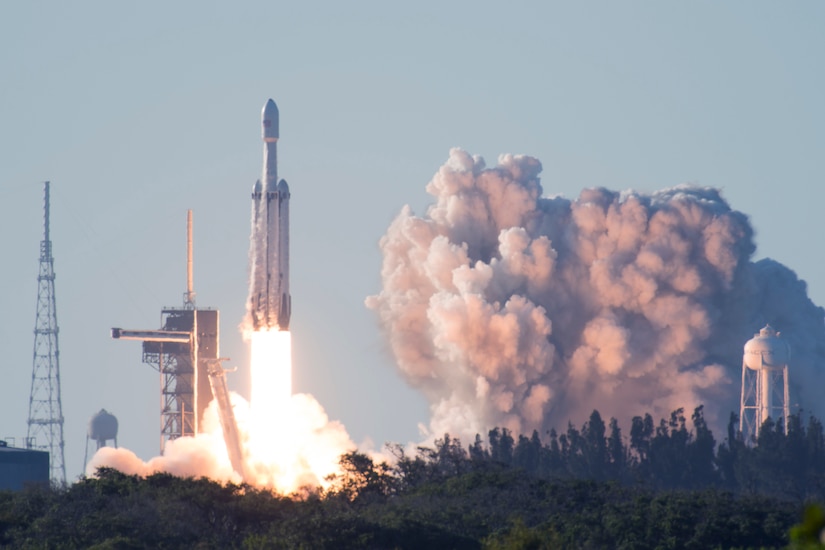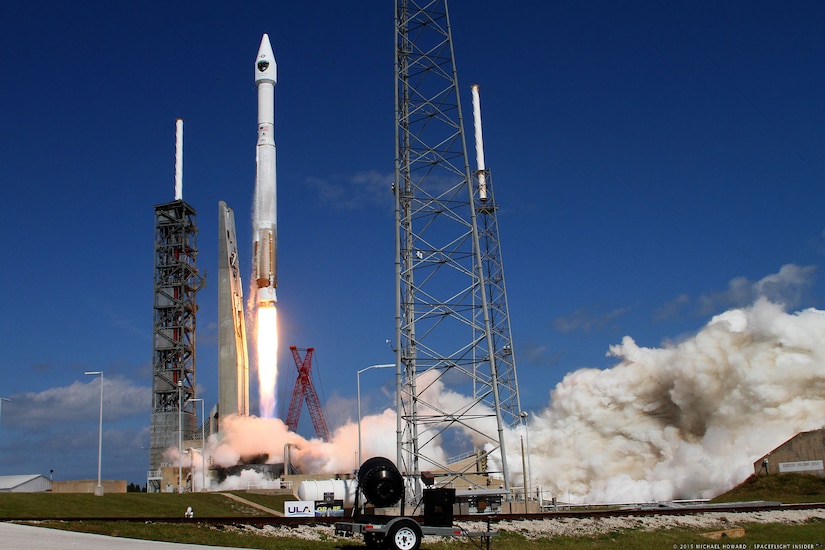When the United States sent men to the moon in the 1960s, the effort was largely driven by the government. But the future of the U.S. space effort will be agile innovators in the private sector who partner with the government, the Space Force's chief scientist said.
"We're very much at a precipice where private investment in space is driving the technology, not necessarily government investment as it has been in the past," Dr. Joel B. Mozer said today during a virtual panel discussion at the Center for Strategic and International Studies in Washington.

The U.S. government, in its pursuit of advancements and participation in the space domain, can contribute through investments in science, technology, infrastructure and science, technology, engineering and math — or STEM — education, Mozer said, as well as through development of policies and regulations that strengthen space efforts.
Defense Department officials must have a unique perspective on space, how it can be used, and what must be done to achieve national security objectives, Mozer said.
"Firstly, it's going to shape the environment that we operate in and will evolve our mission to protect U.S. interests both here on Earth and beyond in the future," he explained. "Second, many of the technological innovations that are now coming and will continue to come from entrepreneurs and industrialists in the space business are from those entrepreneurs. We must harness those innovations for our mission to support the joint fight when we're called upon to do so."
Finally, Mozer said, those involved in the military's pursuit of space must overmatch America's strategic competitors.
"Space is now a warfighting domain," he said. "We must work with industry, as well as our allies, to protect our ability to operate in that domain and to defend our capabilities and ensure that they're there when needed as well as to ensure that the technological advantage in space goes to freedom-loving states who desire to keep space lines of commerce open for all."

In May, NewSpace New Mexico sponsored a four-day conference to discuss civil, commercial and national security space strategy. That conference produced the nearly 90-page report "State of the Space Industrial Base Report 2020."
Mozer, one of the report's authors, said 10 recommendations regarding the future of space — six for the U.S government and four for industry — were the key takeaways.
The No. 1 recommendation, Mozer said, is that the U.S. government develop and endorse a whole-of-government "North Star" vision and strategy for the industrial development of space and that a presidential task force be established to execute that strategy.
"This recommendation is particularly important, and I believe that we're getting there," Mozer said. "In recent years and months, we've seen a lot of action and direction in this direction."
As examples of progress, he cited NASA's Artemis mission, which plans to put the first woman and the next man on the moon by 2024. The establishment of the Space Force is also an example of progress.

"There's a lot of thought being put into this 'North Star' vision, and we're laying some groundwork for it," he said. "However, it is still significant that this recommendation came out on top from the workshop. It tells me that we still have some work to do to describe this future vision, a vision that the nation could get behind and adopt."
The "North Star" vision must be specific about what the United States wants its future in space to look like, and U.S. officials must make sure the decisions they make now move the nation toward a future in space that Americans can aspire to and be proud of, Mozer said.
Other nations, specifically China, already have a long-term vision of the future of space and are making investments toward their own visions, he noted.
"The importance of such a vision is that it has the potential to derive national pride and to instill a culture of progress, and it highlights the value of STEM education for aspiring youth," he said. "There's lots of benefits of such a vision. The value is immense of a 'North Star' vision, and the consequences of a lack of such visual are potentially disastrous."






No comments:
Post a Comment